BEM/MRM 40
40th International Conference on Boundary Elements and other Mesh Reduction Methods
![]()
12 - 14 September, 2017
New Forest, UK
Overview
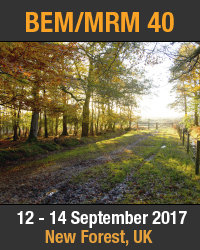
The 40th annual conference on Boundary Elements and other Mesh Reduction Methods (BEM/MRM) took place in the New Forest, home of the Wessex Institute. The meeting was organised by that Institution, represented by Prof Carlos A Brebbia, and the University of Mississippi, USA, represented by Prof Alex H Cheng.
The conference was also supported by the International Journal of Engineering Analysis with Boundary Elements and the International Journal of Computational Methods and Experimental Measurements. The continuing success of these conferences since the first meeting in 1978 in Southampton is confirmation of the strength of the research carried out in boundary elements by many research groups all over the world.
The objective of the research papers presented at the meeting is the further development of techniques that reduce or eliminate the type of meshes required by first-generation computational methods. This has steadily been achieved through the development of BEM as a computational tool. The meeting also encouraged the presentation of papers on the use of BEM and, in particular, the description of new applications.
Opening the Conference
The Conference was opened by Prof Carlos A Brebbia who explained the importance of the meeting for the Wessex Institute. The original research on Boundary Elements started by his Group in Southampton University in 1978 laid the foundation for establishing WIT back in 1986 on the Ashurst Lodge campus. BEM research is still the basis of Ashurst Lodge collaboration with industry and the software tools continue to be developed in response to user demands. This drives the advanced research carried out at the Institute.
All papers presented at the conference are available in paper and digital format, and archived in the Institute’s eLibrary (www.witpress.com/elibrary) where they are Open Access to be freely downloaded by the scientific community.
George Green Medal
Following this Carlos introduced the George Green Medal, which was awarded for the first time at the 37th International Conference on Boundary Elements and Other Mesh Reduction Methods held in 2014. This was a joint initiative by the Wessex Institute and the University of Mississippi.
The importance of Green’s work cannot be over-emphasised, particularly his development of his functions which set the basis for boundary elements. Very little is known about George Green – there is not even a picture of him and hence the Medal can only depict his windmill near Nottingham, relating to his trade. Green was totally self-taught and published a few copies of his most famous works on a subscription only basis.
It is impossible to understand how George Green was able to acquire his knowledge in a backwater place of England, as Nottingham was at that time. He only had access to a local library and distributed his work around sponsors who were unable to fully appreciate the importance of his work.
One of these sponsors pointed out the work to a Cambridge Don and this led to a minor appointment at that University, which he had to leave due to illness. He died shortly afterwards. His research was forgotten and only rediscovered much later on thanks to Lord Kelvin.
Prof Henry Power
Carlos announced that the George Green Medal was to be awarded posthumously to Prof Henry Power from the University of Nottingham, who very sadly passed away earlier this year.
Henry – Carlos said – who has been described as a giant in his field, was closely associated with the Wessex Institute, where he worked from 1991 to 2000. After this he became Professor at the University of Nottingham with the Chair of Computational Fluid Dynamics in the Department of Mechanical Engineering.
Henry was born in Caracas, Venezuela, where he graduated from the Central University of Venezuela as a Civil Engineer, after which he studied at MIT. Upon his return to Venezuela, he worked at the Central University, starting as a Research Fellow and becoming Professor in charge of the University’s Institute of Fluid Mechanics.
It was during that time that Carlos met Henry at an International Conference in Novo Hamburgo, Brazil where – between riding and swimming, activities which they both loved - they discussed the possible application of boundary elements to problems such as bubble mechanics. This led to Henry spending his sabbatical leave at Wessex Institute, where he afterwards stayed for nine years, becoming Head of its Advanced Computing Division.
In 2000 Henry joined the University of Nottingham’s Faculty of Engineering, where he established a long and distinguished career spanning 17 years. Blessed with a brilliant mathematical mind, he always felt that there was no problem that could not be looked at from a numerical point of view.
Throughout his academic career in the UK, Henry taught many courses on advanced numerical techniques, among others. He continued to develop the pioneering Boundary Element Method and its industrial applications. His research covered many areas of applied mathematics and he had numerous collaborators around the world. An outstanding researcher, his mathematical ability was matched by his phenomenal work rate. He was exceptionally well versed in leading difficult areas of numerical modelling with the novel use of boundary element and other meshless techniques. During his stay at WIT he became an Editorial Board Member of the International Journal of Engineering Analysis with Boundary Elements, where he contributed with numerous papers and was renowned as one of the best reviewers.
Henry was very much a family man. He is survived by his wife Beatriz, who teaches Spanish at Nottingham University, and his son Guillermo and daughter Coromoto.
Elsevier sent a tribute to the work of Henry Power who published 44 papers in the International Journal of Engineering Analysis with Boundary Elements of which he was a member of the Board for over 20 years. They expressed their sincere condolences to his widow Beatriz and his children, grandchildren and to his colleagues, both at the University and in the BEM community.
Carlos then proceeded to award the George Green Medal posthumously to Henry’s widow, Beatriz, who accepted the award on his behalf.
Coromoto Power expressed the gratitude of her mother Beatriz and all her family to the Boundary Element Community and particularly to Carlos Brebbia and the many friends they made when at WIT.
Prof Antonio Tadeu
Alex Cheng then announced that another George Green Medal was to be awarded to Prof Antonio Tadeu from the University of Coimbra, Portugal.
His early work under Professor Eduardo Kausel at MIT was oriented towards the solution of seismic problems using integral equations. This developed into a series of other applications, including thermal problems and acoustics. More recently, he focused on the setting up of his Institute of Acoustics and Vibrations where experimental work can be carried out to validate numerical solutions and further understand practical engineering problems. Much of his current work relates to environmental issues and human comfort.
Antonio is a member of the WIT Board of Directors and has collaborated with the Institute in many conferences and publications. He is an expert in computational modelling and has applied techniques for the solution of structural, acoustic, fluid dynamics and many other problems.
Antonio then gave his keynote address entitled “Life at the Edge: 20 years of work in Boundary Elements and other Mesh Reduction Methods”. His presentation first looked back over a number of boundary element and meshless reduction techniques developed over the last twenty years to simulate steady and unsteady wave propagation in solid and fluid media, and heat, air and moisture flow. It covered 2D, 2.5D (where the longitudinal geometry is assumed to be invariant in the axial direction) and 3.0D formulations, and also included a set of analytical solutions developed for circular multi-layered subdomains. These can be used as fundamental solutions. It went on to show how different coupled techniques, in particular the BEM-MLPG and BEM-FEM approaches, perform when used to solve problems for which material properties change continuously.
All the proposed formulations were verified against known analytical solutions for simple geometries, such as circular cylindrical domains and flat multilayered systems to illustrate the efficiency of the proposed methodologies. Numerical and experimental applications are included to illustrate the applicability of the various formulations. Results in both the time and the frequency domain were presented.
There was another keynote address given by Ney Dumont from the Pontifical Catholic University of Rio de Janeiro, Brazil, entitled “The Collocation Boundary Element Method Revisited: Perfect Code for 2D Problems”.
Conference Topics
The meeting contained a series of sessions in which the papers were grouped under the following headings, ie:
• Advanced meshless and mesh reduction methods
• Computational methods
• Damage mechanics and fracture
• Dynamics and vibrations
• Advanced formulations
Invited Lectures
There were a number of invited lectures by well-known colleagues:
• “Kansa RBF method for nonlinear problems”, by Andreas Karageorghis, University of Cyprus, Cyprus.
• “Multi-scale cardiovascular flow analysis by an integrated meshless-lumped parameter model”, by Leonardo Bueno, Embry-Riddle Aeronautical University, USA.
• “An investigation of eigenfrequencies of boundary integral equations and the Burton-Miller formulation in two-dimensional elastodynamics”, by Toshiro Matsumoto, Nagoya University, Japan.
• “BEM/FEM formulations for the analysis of piles submitted to horizontal loads”, by Joao Batista de Paiva, University of São Paulo, Brazil.
• “Boundary –Domain Integral Method for vorticity transport equation with variable viscosity”, by Jure Ravnik, University of Maribor, Slovenia.
• “Analysis of two cohesive zone models for crack propagation in notched beams using the BEM”, by Leandro Palermo Jr, University of Campinas, Brazil.
• “Inverse heat conduction in anisotropic and functionally graded media by finite integration method”, by Pihua Wen, Queen Mary University, UK.
• “Boundary value problems for elastic half-planed posed in terms of stress and displacement orientations”, by Alexander Galybin, Schmidt Institute of Physics of the Earth, Russia.
• “Thermoelastic analysis of bending problems in FGM plates”, by Vladimir Sladek, Slovak Academy of Sciences, Slovakia.
• “MFS analysis of the vibration filtering effect of periodic structures in elastic media”, by Luis Godinho, University of Coimbra, Portugal.
• “Coupled BEM and FEM analysis of fluid-structure interaction in dual compartment tanks”, by Elena Strelnikova, Ukrainian Academy of Sciences, Ukraine.
• “Fundamental solutions for the general laminate problem with the stress function formalism”, by Stavros Syngellakis, Wessex Institute, UK.
Special Session
A special session was organised by Prof Dragan Poljak from the University of Split on “Boundary Elements and other Reduction Methods in Bioelectromagnetics”, which included his lecture entitled “Boundary integral methods in bioelectromagnetics and biomedical applications of electromagnetic fields. Other papers in this special session were:
• “Surface equivalence principle and Surface Integral Equation (SIE) revisited for bioelectromagnetics application”.
• “Hybrid FEM/BEM for human head exposed to high frequency electromagnetic radiation”.
BBQ
A special lunch BBQ was arranged during the first day to encourage interaction and gave the delegates the opportunity to visit parts of the WIT Campus. The BBQ consisted of roasted lamb, for which the New Forest is well known. It was accompanied by salads and fruits, as well as a variety of drinks and sweets. Some of the delegates were then shown around the main research areas of the Campus where they could better appreciate the work of WIT.
ISAC Dinner
During the Conference, members of the Editorial Board of the International Journal of Engineering Analysis with Boundary Elements (EABE) met over dinner to discuss how the publication is progressing and ways in which its performance versus other journals on Computational Methods in Engineering can be improved. Alex Cheng commented on the statistics distributed by Elsevier, showing that the Impact Factor remained similar in 2017 as in 2016. He thinks that the IF needs to be seen in such a way that it is classified. It belongs most appropriately in the lists of Computational Mathematics or Engineering classifications above its IF is comparatively high, ie in the first quarter. Alex then referred to the way in which papers are processed leading to a 30% or so acceptance rate. He also mentioned that there are currently no issues but only volumes and no page limit per manuscript. Authors are not required to pay except in the case that they wish their paper to be Open Access.
A number of suggestions were put forward as well as the nomination of new members discussed. As the number of members is now substantial, it was decided to invite those who have not shown sufficient interest in the Journal to step down in order to open the way for new members.
Excursion to Salisbury
During the afternoon of the second day the delegates were offered an excursion to Salisbury, a medieval cathedral city situated in the southern county of Wiltshire. The city has a rich artistic heritage with hundreds of buildings listed for their historical and architectural merit. Walking through Salisbury, the delegates visited the Cathedral, which is the tallest medieval structure in Great Britain that many consider England’s finest gothic Cathedral. An original Magna Carta manuscript, one of only four in the world, dating from 1215 AD, is located in the Chapter House at Salisbury Cathedral. Also on display is the world’s oldest working clock which dates back to 1386 AD. After visiting the Cathedral, the tour continued around the surrounding Close, which is the setting for an exquisite display of elegant 17th and 18th century houses and at 80 acres, is the largest Close in Britain.
Conference Dinner
The Conference banquet took place in one of the most impressive venues in the New Forest, Rhinefield House, now a hotel but originally the residence of the Walker-Munro family, who built it on the site of one of the original Lodges in the Forest in 1895. The house was a present from Mrs Walker’s parents when she married a naval officer called Munro. It was built in a style that resembled a Scottish castle and is surrounded by beautiful gardens.
The rooms in the House cover a wide variety of styles, from French and Italian, to Medieval English and even an Arabic room. The most impressive room is the Great Hall whose roof is of the hammer beam style, similar to the one that can be seen in the ancient-hall of the Houses of Parliament, (which is the only remainder of the original building after a XIX century fire). The room is dominated by a massive fireplace, all that is left of the original XVII century Lodge. The unique Alhambra room is decorated in the Mudejar style, typical of Spanish Islamic Heritage. It was a smoking room, a present from the lady of the house to her husband, upon his return from a long tour of duty. The banquet took place in this room.
The delegates were shown around the gardens before sitting down to dinner in the Alhambra room. Dinner consisted of a selection of dishes made with local produce, accompanied by excellent wines.
Closing the Conference
Stavros Syngellakis, Professor and WIT Board Member closed the conference, thanking all the delegates for attending, and hoped they would be able to attend the next BEM/MRM conference to be held in the New Forest from 11-13 September 2018.
Conference Proceedings
The proceedings of BEM/MRM 40 - Boundary Elements and other Mesh Reduction Methods XXXX, 180pp (Print ISBN:978-1-78466-227-1; eISBN: 978-1-78466-228-8) are available from WIT Press. Orders can be placed on the WIT Press web site at www.witpress.com or by email: This email address is being protected from spambots. You need JavaScript enabled to view it., telephone: +44 (0) 238 029 3223 or fax: +44 (0) 238 029 2853.
Associated conferences:
• SUSI 2018, 4 - 6 June, 2018, Seville, Spain
• AFM 2018, 10 - 12 July, 2018, Ljubljana, Slovenia
• HSPM 2018, 11 - 13 July, 2018, Ljubljana, Slovenia
• BEM/MRM 2018, 11 - 13 September 2018, New Forest, UK

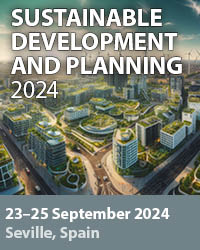
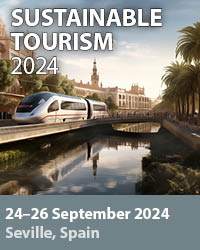
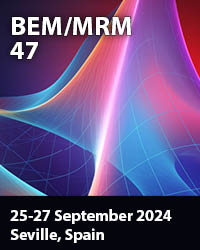
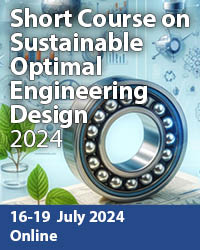
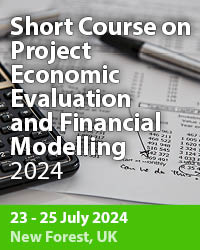
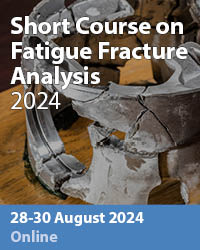
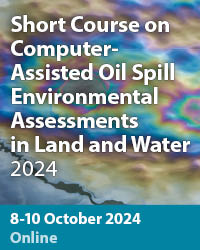
 Wessex Institute
Wessex Institute